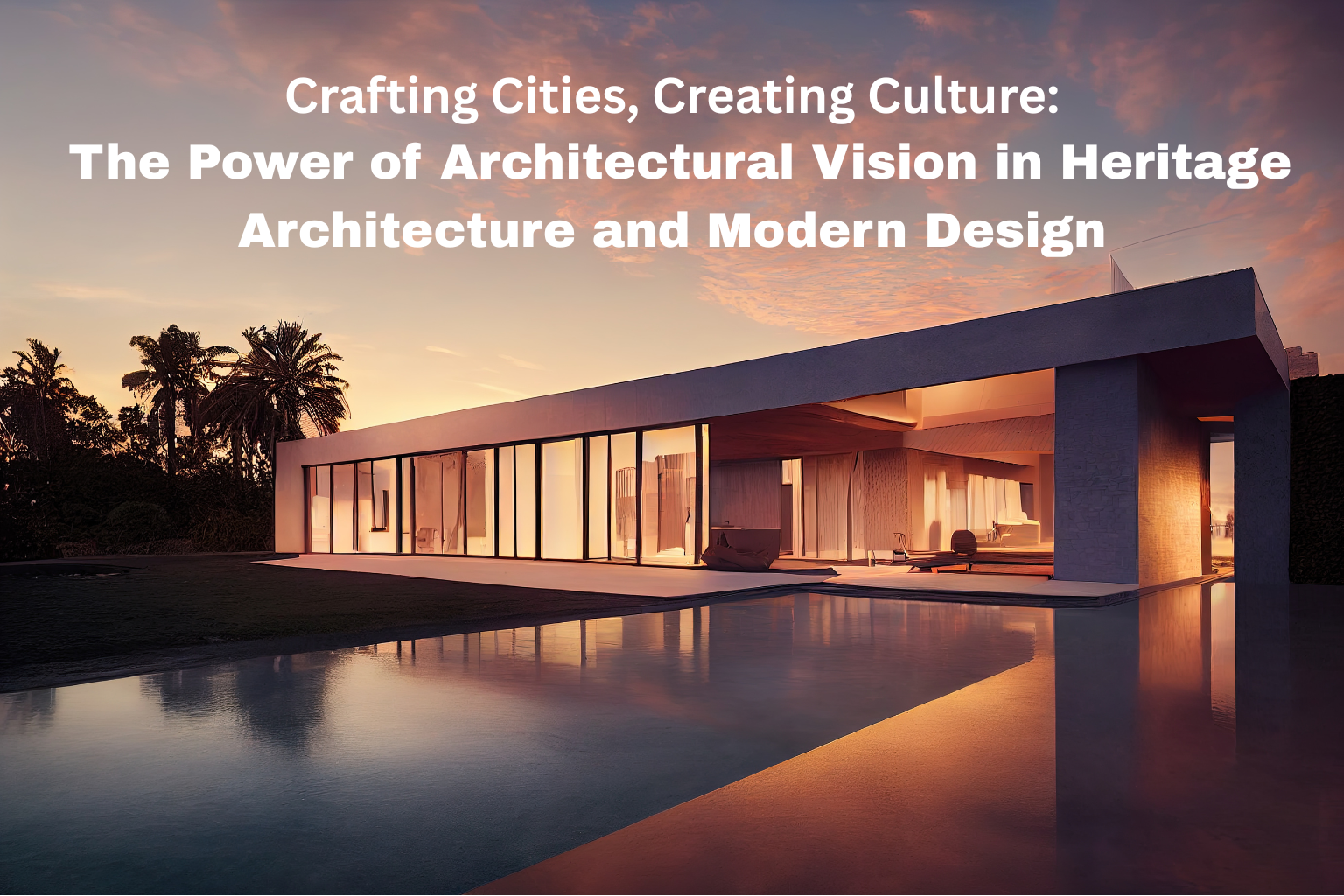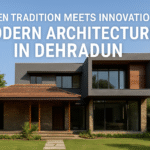Crafting Cities, Creating Culture: The Power of Architectural Vision in Heritage Architecture and Modern Design
Introduction: Architecture as a Cultural Language
Architecture is not just about building structures—it is about crafting cities, creating culture, and shaping identities. Every wall, every pillar, every skyline narrates a story of human imagination, resilience, and collective progress. From heritage architecture that reflects centuries of tradition to futuristic skyscrapers redefining modern skylines, architectural vision is the bridge between past, present, and future.
Cities are more than just spaces to live; they are living organisms that evolve with time. Architecture determines how we experience those spaces, how we connect with our heritage, and how we create cultures that last generations.
Heritage Architecture: The Timeless Foundation of Culture
Heritage architecture is the backbone of human civilization. Ancient temples, forts, palaces, mosques, cathedrals, and stepwells are not mere monuments—they are repositories of cultural identity.
- In India, the intricate carvings of Khajuraho Temples or the grandeur of the Taj Mahal show how heritage architecture was deeply rooted in spirituality, craftsmanship, and social values.
- In Europe, the Gothic cathedrals of Paris or the Colosseum in Rome still stand as testaments to engineering brilliance and artistic vision.
- In the Middle East, Islamic heritage architecture like the Alhambra in Spain or Hampi in Karnataka fuse geometry with philosophy, embodying both beauty and intellect.
These structures were not just functional—they were cultural symbols. Their architectural vision was holistic, blending engineering, art, religion, and community life.
Crafting Cities Through Architectural Vision
When we speak of crafting cities, architecture plays a role far beyond construction. The layout of streets, public squares, housing, and monuments contributes to the cultural rhythm of a city.
- Heritage cities like Jaipur (India), Florence (Italy), or Kyoto (Japan) show how architectural vision created spaces that are still vibrant centuries later.
- The Pink City of Jaipur, for example, was designed with astronomy, geometry, and social harmony in mind. Its city planning, heritage architecture, and symbolic use of pink sandstone gave it a unique identity that continues to attract millions.
- Similarly, Florence is not just a city; it is a living museum of Renaissance architecture where every building is a cultural narrative.
Architectural vision is thus not merely about structures—it’s about designing human experiences that make cities liveable, memorable, and meaningful.
Creating Culture Through Spaces
Culture thrives in the spaces we design. A heritage structure like an amphitheater or temple was never just stone and mortar—it was a stage for cultural interaction, rituals, debates, and festivals.
In today’s cities, modern architects draw inspiration from this cultural role of heritage architecture. Public parks, cultural centers, libraries, and art museums are designed as spaces of shared identity.
- The Sydney Opera House is more than a building—it is a cultural icon of Australia.
- The Lotus Temple in Delhi, inspired by universal values, is a modern-day symbol of peace and unity.
Both examples show how architectural vision continues to create culture, much like heritage architecture did in the past.
Heritage Architecture vs. Modern Architecture: A Dialogue Across Time
Modern skylines of glass and steel often stand beside centuries-old palaces and forts. This coexistence creates a dialogue between past and future.
- Heritage architecture provides identity and continuity.
- Modern architecture addresses present needs—sustainability, smart cities, and functionality.
Cities like London, Istanbul, and Delhi balance heritage architecture with modern design. The Red Fort and Lotus Temple in Delhi, for example, show how different eras of architectural vision can coexist, each reflecting the values of its time.
The Power of Architectural Vision in Heritage Conservation
Today, one of the greatest challenges is preserving heritage architecture in rapidly urbanizing cities. Architectural vision must include heritage conservation as part of city planning.
- Adaptive reuse (turning palaces into hotels or museums) allows heritage structures to stay relevant while preserving their cultural value.
- Sustainable restoration ensures ancient buildings are preserved without losing authenticity.
For example:
- The Amber Fort in Jaipur has been preserved through careful restoration.
- The Venetian canals are being safeguarded against flooding through innovative engineering.
Thus, architectural vision is about blending conservation with innovation.
Sustainable Cities: The New Cultural Movement
Modern architectural vision extends to sustainability. Just as heritage architecture used local materials (stone, wood, mud) and climate-responsive design, today’s architects are re-learning these lessons.
- Green buildings integrate solar panels, natural ventilation, and recycled materials.
- Smart cities use architecture and technology together to create efficient, eco-friendly spaces.
- Examples include Masdar City in Abu Dhabi, a model of sustainable architecture, and Singapore’s Gardens by the Bay, which combines technology with ecological awareness.
By embracing sustainability, modern architectural vision continues the legacy of heritage architecture—creating not just buildings, but cultural ecosystems.
Architecture as Identity: How Cities Become Symbols
Some cities are instantly recognized by their architecture.
- Paris with the Eiffel Tower.
- Agra with the Taj Mahal.
- Dubai with the Burj Khalifa.
- Athens with the Parthenon.
This shows the power of architectural vision—turning cities into symbols of culture, heritage, and innovation. A building is not just a structure; it becomes an identity for millions.
The Role of Architects as Cultural Visionaries
Architects are more than designers; they are cultural visionaries. They:
- Preserve heritage.
- Innovate for the future.
- Shape human experiences.
Famous visionaries like Le Corbusier, who designed Chandigarh, or Antoni Gaudí, who created Barcelona’s Sagrada Familia, demonstrate how architecture can craft entire cultural landscapes.
Conclusion: The Future of Crafting Cities and Creating Culture
“Crafting Cities, Creating Culture: The Power of Architectural Vision” reminds us that architecture is not just construction—it is culture in physical form. From heritage architecture to futuristic skylines, every design decision shapes human experience.
As we move into the future, the true power of architectural vision lies in:
- Respecting heritage while embracing innovation.
- Creating sustainable cities that balance nature and technology.
- Designing spaces that celebrate human diversity and unity.
Just as the Taj Mahal, Florence’s Duomo, or the Burj Khalifa inspire awe, future architectural visions must continue to craft cities and create cultures that define generations.






Leave a Reply